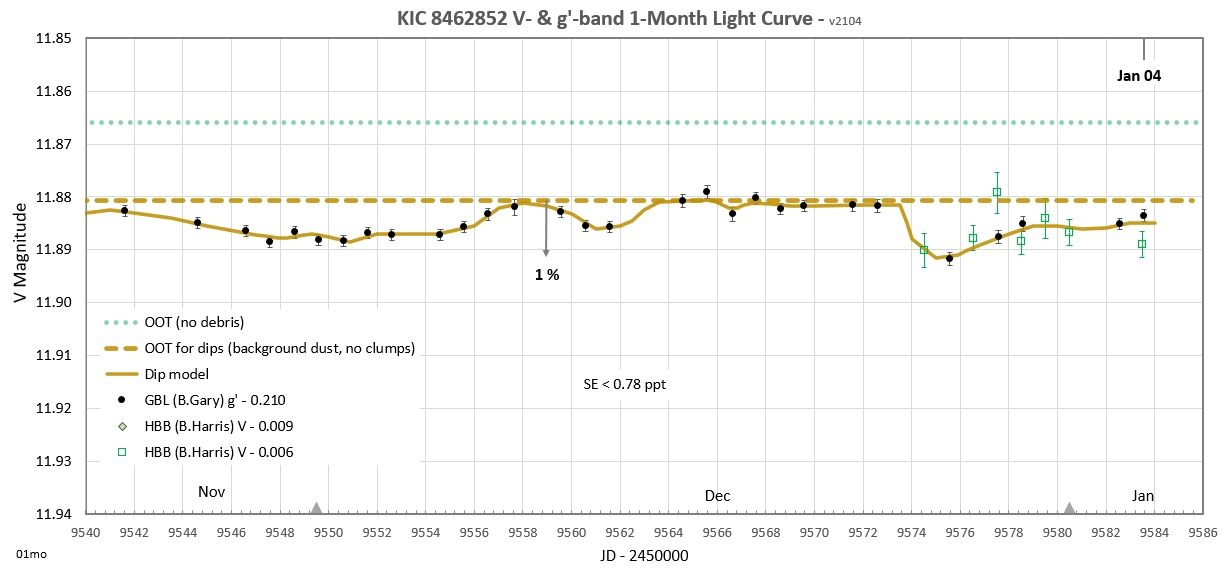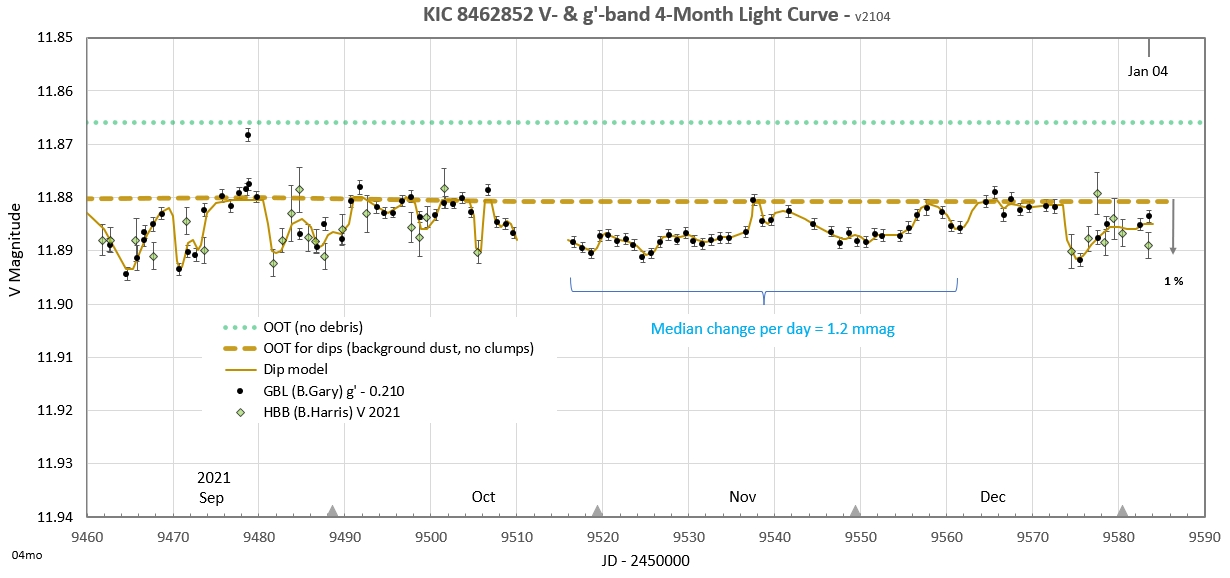Bruce Gary, Last updated: 2022.05.17, 00 UT
I
have
discontinued
observations
of KIC846 for
this observing
season. My
plan is to
write a
"report"
summarizing my
interpretation
of what was
found from the
photometric
observations
reported on
this web page.
Before doing
this "I need a
break" - so
maybe in
February I'll
have a PDF for
download from
this web page.
A 1 % dip recovered a little but is now persisting at 0.5 %. I don't think the fade pattern is similar to the pattern predicted 4 years ago. This probably invalidates the prediction of a return of the Kepler D1540 fade pattern, and hence a repudiation of the 1601-day periodicity.
We're beginning the observing window for a return of the Kepler D1540 fade pattern that was predicted 4 years ago to occur this month (Bourne, Gary and Plakhov, 2017). If it repeats it should be possible to use g' and i' measurements to determine whether the entire fade is caused by an optically thin dust cloud or an optically thick one (based on ratios of depths at these two bands). If the central portion is produced by a large planet (or small star, such as a brown dwarf), it the central part will be optically thick (same depth at both bands) and the flanks (ring system) could be optically thin (depth at i' ~ 40 % of depth at g' band). If this fade structure is a "no show" then we will be inclined to disbelieve in the 1601-day periodicity and the interpretation of an association between the D1540 dip structure and what was observed 1601 days later, as described in Bourne, Gary and Plakhov (2017).

Figure 0.1. V and (offset) g' mag's for the last month.

Figure 0.2. Same data but showing a prediction made 4 years ago (return of Kepler D1540).
_______________________________________________________________________
A 1 % dip recovered a little but is now persisting at 0.5 %. I don't think the fade pattern is similar to the pattern predicted 4 years ago. This probably invalidates the prediction of a return of the Kepler D1540 fade pattern, and hence a repudiation of the 1601-day periodicity.
We're beginning the observing window for a return of the Kepler D1540 fade pattern that was predicted 4 years ago to occur this month (Bourne, Gary and Plakhov, 2017). If it repeats it should be possible to use g' and i' measurements to determine whether the entire fade is caused by an optically thin dust cloud or an optically thick one (based on ratios of depths at these two bands). If the central portion is produced by a large planet (or small star, such as a brown dwarf), it the central part will be optically thick (same depth at both bands) and the flanks (ring system) could be optically thin (depth at i' ~ 40 % of depth at g' band). If this fade structure is a "no show" then we will be inclined to disbelieve in the 1601-day periodicity and the interpretation of an association between the D1540 dip structure and what was observed 1601 days later, as described in Bourne, Gary and Plakhov (2017).

Figure 0.1. V and (offset) g' mag's for the last month.

Figure 0.2. Same data but showing a prediction made 4 years ago (return of Kepler D1540).